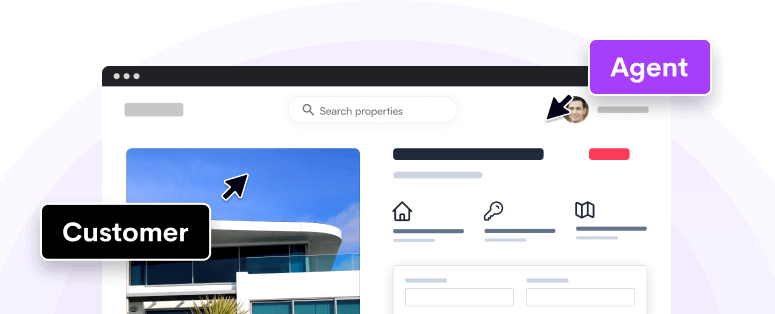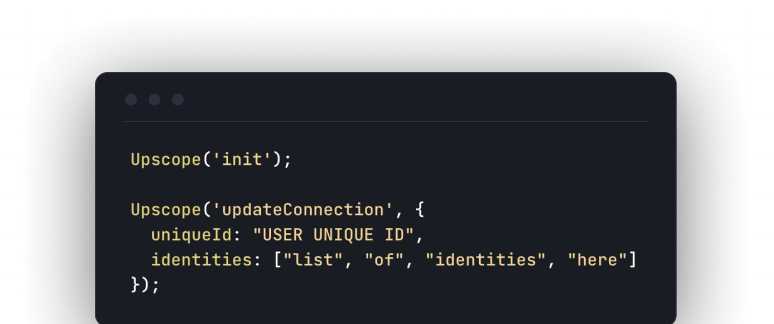From working at a SaaS company, I can tell you, that poor customer onboarding
can be your fastest downfall.

A study by SaaS
Capital,
revealed that a “1 percent difference in churn can have a 12 percent impact on
company valuation in 5 years.” So, it is essential that SaaS companies take
action to reduce churn for growth. And, not surprisingly enough, it all starts
with onboarding.
First impressions are everything
There is nothing worse than spending all of your time and effort getting
customers to start a trial of your product, to then not have a clue how to use
it. No customer is going to stick around, despite how perfect your product is
for their issues, if they don’t understand it.
From the moment a customer opens your app, the relationship between the
business and them, has started. You’ve worked hard on the product, developing,
designing and testing it numerous times. Many sleepless nights have led up to
the moment of the product release. It happens, and everyone is excited to see
how well it’s going to do.
Then, you realise that maybe users are leaving and not converting the way you
had expected. Perhaps you check your analytics to see what is causing the
bounce rate? And, after a pretty clear argument in your head about the
hundreds of possible reasons, you soon begin to realise that there is
something wrong with the customer onboarding. Something that can be changed to
improve retention and conversion rates.
1. Test Out Competitors’ products
This has to be done long before your onboarding process begins. Have a look at
your competitors onboarding process. Make notes of things that you like and
don’t like, how certain text and images made you feel, and whether there is
something that you should be doing from their onboarding process.
The sooner-the-better with this one. The earlier you become a “customer” of
your competitor, the more you’ll be able to see, including their transitions
and improvement. The only time that this **doesn’t **act as an advantage:
-
You do not have competitors.
-
The other solutions (competitors) are not to the same standard as your
product.
2. Know your USP (Unique Selling Point)
So, what is your competitive advantage? There must be something that your SaaS
product has, that makes it different to your competitors.
Think about it, like this: When
KissMetrics
first launched, it had competition. Google Analytics was the leading web
analytics, and was free. KissMetrics USP, was that they offered web metrics
that showed website owners how to turn figures and charts into actionable
data. This is how KissMetrics survived the competiton.
So, when you’re starting or re-thinking your customer onboarding, ask yourself
why customers should choose you over your competition? And, remind them of the
unique value your SaaS product will give to them. This increases your chances
of retaining them.
3. KISS (Keep it Short and Simple .or. Keep it Simple, Stupid)
I know, I know. It’s a sales term. But it also works in this instance too.
There is no point in confusing potential leads or customers. Clearly explain
how your product works and highlight the value of it upfront. This first step
process for the customer should be quick and painless.
“Simplicity is hard to build, easy to use, and hard to charge for.
Complexity is easy to build, hard to use, and easy to charge for.”
Chris Sacca
The easiest sign up situation for potential customers is to ask a minimal
amount of information. We’ve all been there, filling out tedious forms that
you sometimes give up on half way through. You don’t want to frighten
customers away before they’ve even seen the product.
Make sure you have the following:
-
You clearly explain how to use the product
-
Highlight the value of the product
-
Your marketing copy makes the product even easier to understand.
4. See that red flag and deal with it
A user won’t randomly decided they don’t want your product and just leave.
They are usually unhappy or confused for a while. They’ll eventually get bored
and irritated after a while, and that’s when they decided to leave. Just like
with a real-life relationship, if you identify and address any issues
beforehand, you stand a better chance at salvaging the relationship.
This then leads to the question, when is someone about to leave?
Well, there are a few signs. You can always take a look at your analytics and
see these red lights. They are usually:
-
(Reduced) Time spent by a customer
-
Time spent on the landing page
-
The way the user is using your product. If it has decreased significantly,
it’s not looking great.
These signs could mean that your customers are about to churn. So, in order to
reduce the churn rate, you should take action asap. Consider the following:
-
Reach out to customers who didn’t complete your onboarding process
-
Reach out to those who haven’t been active/logged in for a while, and
encourage them to use your product more. -
Check in with those customers who are not as used to technology/ have had
issues with your product in the past, and offer them help.
At Upscope, we use
Intercom to onboard our customers. By following
these simple steps with
metrics
in mind, we have drastically reduced our churn rate. Honestly, you will never
retain all of your customers, as there are some reasons you can’t control.
However, there are many cases you can control, and it is important to do so.
5. Don’t overwhelm your customers
Customer onboarding is a ongoing process. So, it is important to keep your
customers informed about new UI features and improvements, and generally how
to make the most of your product. The best way to do this, is one at a time.
Slow and steady wins the race here! These small progressive wins are more
likely to keep your customer using the product and unlikely to confuse them.
The following emails are what your going for:
-
Sign up/in
-
Welcome emails
-
Marketing emails
-
Feature updates
**6. Keep going, testing and continually improving your customer
onboarding process**
Onboarding is never going to be a one time thing. You can’t design the process
and forget about it. You have to continually improve.
A great way to do this, is to ask people you know, to try signing up for your
product, and see how much they understand etc. SaaS products are new to many
people, so make it as simple as possible, and keep in mind those who may not
get all of the terminology that you might first time round.
You can also use continuous user testing or A/B testings to improve. So long
as you experiment, test, record and optimize your ideas.
And Lastly…
Even though a customer buys your product, it doesn’t mean they are necessarily
going to understand/adopt it successfully. By investing in customer
onboarding, you’ll reduce SaaS churn and increase customer retention.






